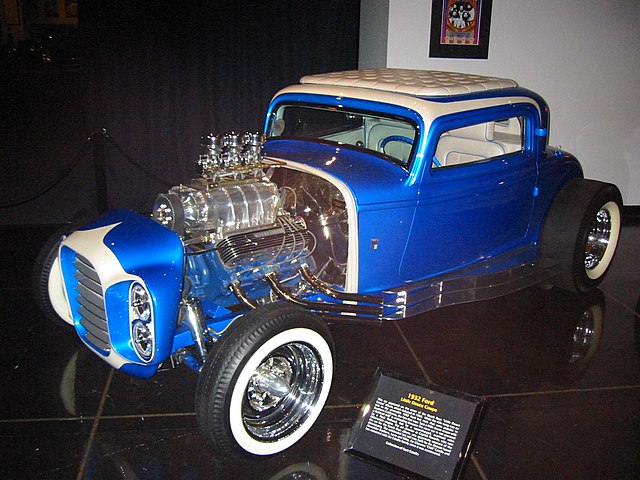Surf music is a genre of rock music associated with surf culture, particularly as found in Southern California. It was especially popular from 1958 to 1964 in two major forms. The first is instrumental surf, distinguished by reverb-heavy electric guitars played to evoke the sound of crashing waves, largely pioneered by Dick Dale and the Del-Tones. The second is vocal surf, which took elements of the original surf sound and added vocal harmonies, a movement led by the Beach Boys.
1963 performance flyer, promoting surf musicians
The Beach Boys performing "I Get Around" in 1964
The 1932 Ford that appeared on the cover to the Beach Boys' album, Little Deuce Coupe from 1963
Surf culture includes the people, language, fashion, and lifestyle surrounding the sport of surfing. The history of surfing began with the ancient Polynesians. That initial culture directly influenced modern surfing, which began to flourish and evolve in the early 20th century, with its popularity peaking during the 1950s and 1960s. It has affected music, fashion, literature, film, art, and youth jargon in popular culture. The number of surfers throughout the world continues to increase as the culture spreads.
2010 Mavericks competition at Half Moon Bay, California
Pontiac woodie, used by early surfers
Alphonse Pellion, Sandwich Islands: houses of Kalanimoku, Prime Minister of the King; fabric making. In the foreground is an olo board, the largest of the Hawaiian wooden surfboards. (c. 1819)
Duke Kahanamoku and the Hui Nalu Club







